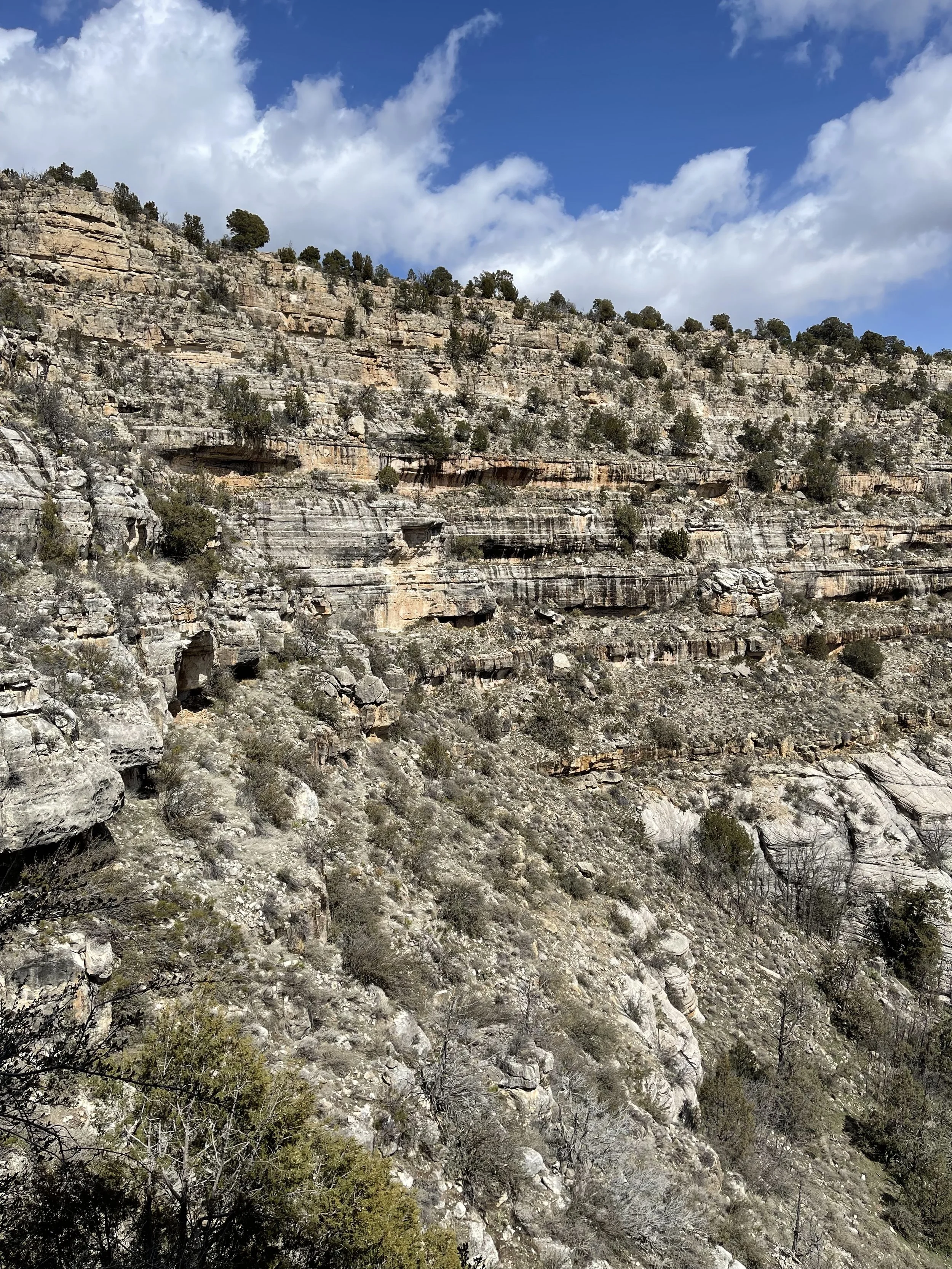Dispatches From the Parks: Walnut Canyon National Monument
Whenever I go road tripping through our national park system, it’s always the big national parks that get most of my attention during the planning stages of the trip. However, a lot of the time it’s the lesser known national historic sites and national monuments that can leave you with the most satisfaction in the moment. On my trip to the southwest, I had the opportunity to experience one of these parks in Walnut Canyon National Monument. The monument preserves the rim and some of the inner canyon of Walnut Canyon, which was also the home of the Sinagua people. It’s not far from Flagstaff, Arizona and you could probably add it to a trip to the Grand Canyon.
My journey to the park began with a drive to the base of the San Francisco Peaks, large, snow capped mountains that dominate the nearby horizon. It’s an interesting contrast from the desert-like scenery I drove through for most of the trip. The nearby Sunset Crater Volcano National Monument brings you even closer to the peaks (I only had enough time at this park to check out the scenery and go through the visitor center where the park’s historic volcano blast is interpreted). Snow became an issue for the first time on my trip, and I was worried when I finally reached the park sign (which is about a five minute drive from the park’s main complex) that I wouldn’t be able to get the most out of my visit here.
The visitor center is a rather interesting one. It’s perched right on the canyon rim and as you walk in you are greeted by a small exhibit on the Sinagua people and all of the other usual visitor center amenities (gift shop, ranger desk, etc.). The real highlight of the visitor center, though, is in the back where there is a viewing station. It offers expansive views of the canyon, but the station is also the starting point for the park’s main trail, the Island Trail.
The Island Trail is a fantastic descent into the canyon that brings you close to the Sinagua structures that are found throughout the canyon. They are hard to see from the rim of the canyon but once you get a few hundred feet below the rim they start to reveal themselves in the canyon’s stony walls. The trail eventually brings you right up to one of these structures where a ranger is stationed to allow you an up close view of this ancient home. The day I was there the full trail was closed due to snow and ice. The park sits at a high elevation of 6500 feet and the park rangers were still working on clearing the part of the trail that I did end up hiking so I was lucky just to step on even part of it. When the trail is fully open it forms a lollipop loop. Instead I had to turn around for an out and back once I reached the Sinagua structure so I didn’t miss much of the trail. The trail is quite popular considering it begins at the visitor center, but be careful about taking this trail as it’s quite steep and the way back involves hiking about 300 feet in elevation gain in less than half a mile.
While I was at the park I also did the Rim Trail, which is much more mellow of an adventure than its sister trail. I did this first as I waited for the snow cleanup on the Island Trail to finish, and it was a great preview of what was to come. The trail delivers expansive views of the canyon, whereas the Island Trail delivers great views of just one bend in the canyon. The trail also allowed you to see the snowy and tree-covered rim of the canyon morph into the rock-walled interior of the canyon. There are tons of interpretative signs along the trail about the plant life in the area, which was interesting. There were also some Sinagua structures along the trail, although they weren’t live-in structures and were not in as good condition as the ones along the Island trail.
You can get a lot out of a visit to Walnut Canyon even if you only have a few hours to spend there. The views are spectacular pretty much anywhere you go at the main visitor complex, but it’s definitely worth it if you are able to get below the canyon rim where the canyon truly reveals itself.




